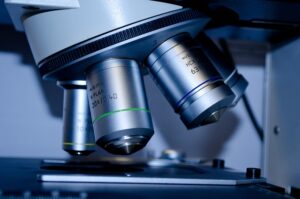Artikler/ Medisinsk utstyr
Medical Equipment: The Key to Quality Healthcare

Introduction
In today's fast-paced world, the demand for effective healthcare services is constantly on the rise. Alongside skilled medical professionals, cutting-edge medical equipment plays a critical role in delivering quality care. From diagnostic tools to life-saving devices, medical equipment aids in accurate diagnoses, efficient treatments, and improved patient outcomes. In this article, we will explore the importance of medical equipment in healthcare and its impact on patient care.
Why is Medical Equipment Essential in Healthcare?
A Paradigm Shift in Healthcare
The use of advanced medical equipment has revolutionized the healthcare industry. With the advent of innovative technologies, medical professionals can now diagnose diseases earlier, treat complex conditions more effectively, and even prevent certain ailments altogether. Gone are the days when medical practitioners solely relied on their clinical expertise; the incorporation of medical equipment has opened up new avenues for accurate and efficient healthcare delivery.
Accurate Diagnosis
Medical equipment plays a key role in accurate disease diagnosis. State-of-the-art imaging technologies, such as Magnetic Resonance Imaging (MRI) and Computed Tomography (CT) scan, provide detailed insights into the patient's condition, enabling physicians to analyze and identify diseases with precision. Early detection can significantly increase the chances of successful treatment, ensuring better patient outcomes.
Efficient Treatment
Once a diagnosis is made, medical equipment continues to be invaluable during the treatment phase. From infusion pumps and ventilators to surgical robots and monitoring devices, these essential tools facilitate efficient and precise interventions. For instance, robotic surgery has revolutionized complex surgeries, minimizing the invasiveness, reducing complications, and enabling faster recovery for patients.
Improved Patient Outcomes
The utilization of medical equipment positively impacts patient outcomes. By providing accurate diagnoses and enabling targeted treatments, these technologies contribute to better prognoses and reduced risks of complications. Moreover, medical equipment plays a crucial role in post-treatment monitoring, allowing healthcare providers to track patient progress and make necessary adjustments in their care plans. This continuous monitoring ensures timely interventions and leads to improved patient outcomes.
Types of Medical Equipment
Diagnostic Equipment
Diagnostic medical equipment aids in identifying diseases and conditions accurately. These devices include X-ray machines, ultrasound machines, electrocardiography (ECG) machines, and laboratory equipment. They enable healthcare professionals to examine patients' internal structures, measure physiological parameters, and identify abnormalities for prompt medical intervention.
Therapeutic Equipment
Therapeutic medical equipment is designed to treat patients and manage various medical conditions. It includes devices used in surgeries, such as anesthesia machines, surgical robots, and lasers. Rehabilitation equipment, like mobility aids and physical therapy tools, also fall under this category. These devices help in reducing pain, restoring functionality, and improving patients' quality of life.
Monitoring Equipment
Monitoring equipment ensures constant supervision of patients' vital signs, enabling healthcare providers to detect any deviations promptly. These devices include blood pressure monitors, pulse oximeters, cardiac monitors, and glucose meters. Real-time monitoring facilitates timely interventions and is particularly crucial in critical care settings.
Life Support Equipment
Life support equipment serves as a lifeline for patients with life-threatening conditions. Ventilators, defibrillators, and extracorporeal membrane oxygenation (ECMO) machines are examples of life support equipment. These devices maintain vital functions and sustain patients' lives during emergencies or when their bodies are unable to perform essential physiological functions.
Ensuring Safety and Reliability in Medical Equipment
With the critical role medical equipment plays in patient care, ensuring safety and reliability is of paramount importance. Regulatory bodies, such as the Food and Drug Administration (FDA) in the United States, set stringent guidelines for the development, testing, and approval of medical devices. Technology advancements and rigorous quality assurance processes minimize the risks associated with medical equipment malfunctioning or inadequate performance.
Healthcare facilities also play a significant role in maintaining the safety of medical equipment. Regular calibration, preventive maintenance, and adherence to manufacturer's guidelines are necessary to ensure that devices function optimally and deliver accurate results.
Conclusion
Medical devices have become an integral part of modern healthcare, which has a significant impact on patient care and outcomes. From accurate disease diagnosis to effective treatment and continuous monitoring, these tools enable healthcare providers to provide high-quality care. The continuous advances in medical device technology promise a future where patient care will become more personalized and efficient. By embracing these innovations, healthcare can continue to evolve and deliver the best possible care to patients around the world.
